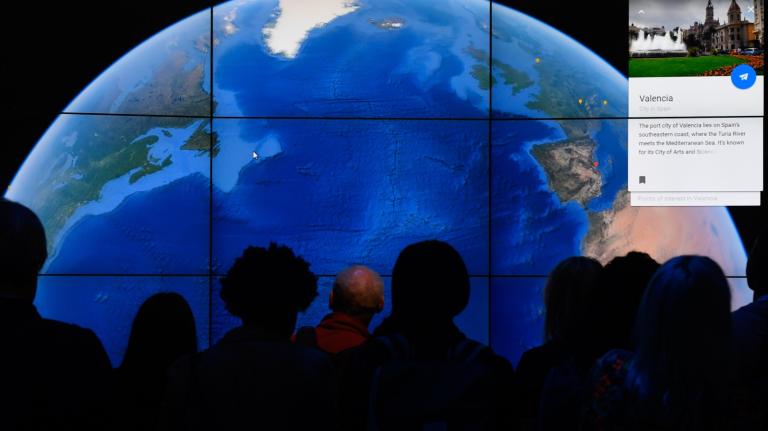As New York City likes to remind us, kids can drink themselves fat on sugary drinks. But another popular drink option for kids, high-caffeine “energy drinks” such as Monster or Red Bull, has an even darker side: the possibility that you can drink yourself dead.
A handful of deaths that allegedly resulted from quaffing energy drinks, including that of a 14-year-old girl, led several senators last year to call on the U.S. Food and Drug Administration to regulate these drinks, something it does not currently do (although the agency did step in and restrict drinks that mix alcohol and caffeine, thanks to the infamous Four Loko malt beverage).
But now, energy drinks are coming under fire from an unexpected source — doctors. At its annual meeting, the American Medical Association, an influential physician’s lobbying group, passed a resolution calling on the Federal Trade Commission to ban marketing of high-caffeine energy drinks to young people. According to Bloomberg News, an AMA board member declared:
Energy drinks contain massive and excessive amounts of caffeine that may lead to a host of health problems in young people, including heart problems … Banning companies from marketing these products to adolescents is a common sense action that we can take to protect the health of American kids.
This is notable, given the AMA’s historical reluctance to come down strongly against beverage companies. It’s even more significant given the recent trend of beverage companies countering anti-soda moves around the country by paying off doctors. The American Academy of Family Physicians took a pile of money from Coca-Cola a few years back to fund health initiatives. Another episode involved the American Beverage Association giving the Children’s Hospital of Philadelphia $10 million to head off an effort to institute a citywide soda tax.
But the AMA began an aggressive turn against soda last year when it passed a resolution at its annual meeting that singled out soda for its role in obesity, and included tepid support for a soda tax to fund anti-obesity efforts. And this year, the group announced its support for restricting the use of food stamps (aka SNAP benefits) on sugar-sweetened drinks.
Those past actions pale in comparison to the group’s new demand for a ban on marketing energy drinks to young people, however. It’s a bold move, given that junk-food marketing is such treacherous political territory. Michelle Obama’s Let’s Move anti-obesity effort famously foundered in that area. Consider, too, that energy drink companies have built their brands on testosterone-fueled extreme sports that have great appeal for teens and adolescents. Here, take a swig:
Still, there’s no question that marketing junk food to kids is a problem. Public health lawyer and Grist contributor Michele Simon lays out the details in her Eat Drink Politics blog:
Researchers and advocates for children’s health agree that advertising junk food to children is effective. One 30-second commercial can influence the food preferences of children as young as age two. For young children, branding even trumps taste. Preschool children report that junk food in McDonald’s packaging taste better than food in plain wrapping — even if it’s the same food. Similar studies show the same results for food packaging featuring media characters.
Research demonstrates that marketing any product to children under age 12 is inherently deceptive. Unlike adults, young children do not have the cognitive capacity to fully understand the purpose of advertising. Very young children cannot even distinguish between a TV program and a commercial. Until the age of about eight, they don’t really understand the concept of selling and they tend to believe what they see.
Moreover, only 40 percent of 11- and 12-year-olds have a full understanding of persuasive intent — that every aspect of advertising is designed to convince them to do things they might not do otherwise. This makes children especially vulnerable to deception by hyperbole, puffery, and other common advertising techniques.
That’s why the World Health Organization’s Europe office just declared junk food marketing to kids “disastrously effective” and released a report advocating policy changes for European governments to restrict it.
In particular, WHO identified the latest social media and online marketing techniques such as “advergames” as something that European governments must address. It also referenced research that suggests that watching television causes obesity not because it is a sedentary activity, but because it exposes kids to hours of potent junk food ads.
Sweden already has strict regulations against advertising junk food to kids under 12 and several other European countries have some form of legal restriction. Here at home, however, not so much.
Food companies’ fury at the prospect of voluntary restrictions was enough to scare off the FTC a few years ago. As a way to head off further action, several media companies, most notably Disney, announced their own programs to restrict junk food ads to kids. However, progress has been uneven. Yes, Disney has more or less lived up to its principles, but Nickelodeon has been more tentative: According to The New York Times, food ads still represent 18 percent of Nickelodeon’s total sales.
The question is whether the FTC will listen to the doctors. I suppose the better question is whether the FTC can hear anyone other than the food companies that have shouted down every mention of the words “restrict junk food advertising to children.”
So far the answer has been no. Perhaps doctors’ efforts combined with the possible acute health risk from high-caffeine energy drinks — the suggestion that someone with a pre-existing heart condition, diagnosed or not, can actually drop dead from drinking them — will be enough to get the government’s attention.
The odds still favor beverage makers — this is America, after all. For your own sake, though, I recommend sticking with sugar-free, caffeine-free tap water. It’s pretty tough to overdose on that.





